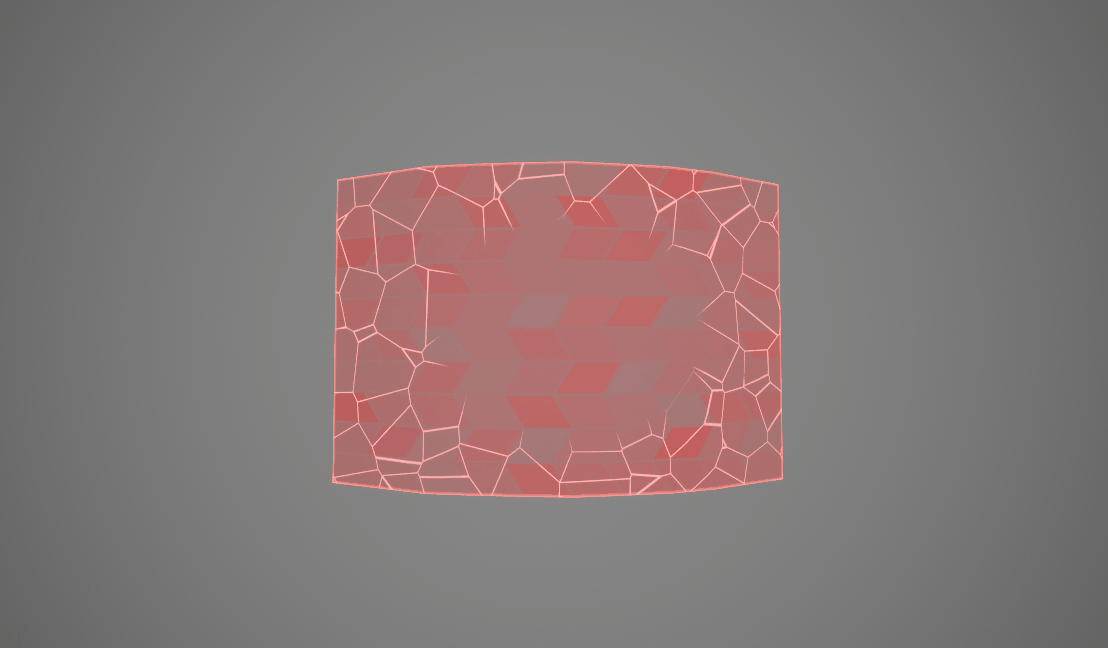Nathan Desjardins
Energy Shield
I was given the task to create the effects for a shield that would move forwards and explode. The shield also would increase its explosion damage as it took damage.


My journey started in Blender, where I created a shield model with precise UV's so I could properly iterate over each piece of the shield effectively. Each individual panel had its own set of vertices, and given a bone for future deformation.

For the opacity flickering, I took the UV map and assigned a random color to each panel to create a very interesting mask. I took the RGB values of the mask and multiplied them together with a sine wave to create variation per-panel in both the strength of opacity and how quickly it flickered. I also remapped the value so the maximum and minimum opacity could easily be adjusted.

I created multiple stages of the cracked texture in Blender, by using color ramped Voronoi noise and a simple circular gradient mask. This was overlaid on top of the shield's shader as an emissive, with a switch node to change how cracked the shield was.

Stage 3 of cracking

The final step was to use the bones to make the shield distort gradually as it took more damage. I used the bone's indices as a seed for a random Perlin noise vector, giving each panel a unique offset. The panels swapped between their offset and default location, with the offset distance increasing based on how damaged the shield was.